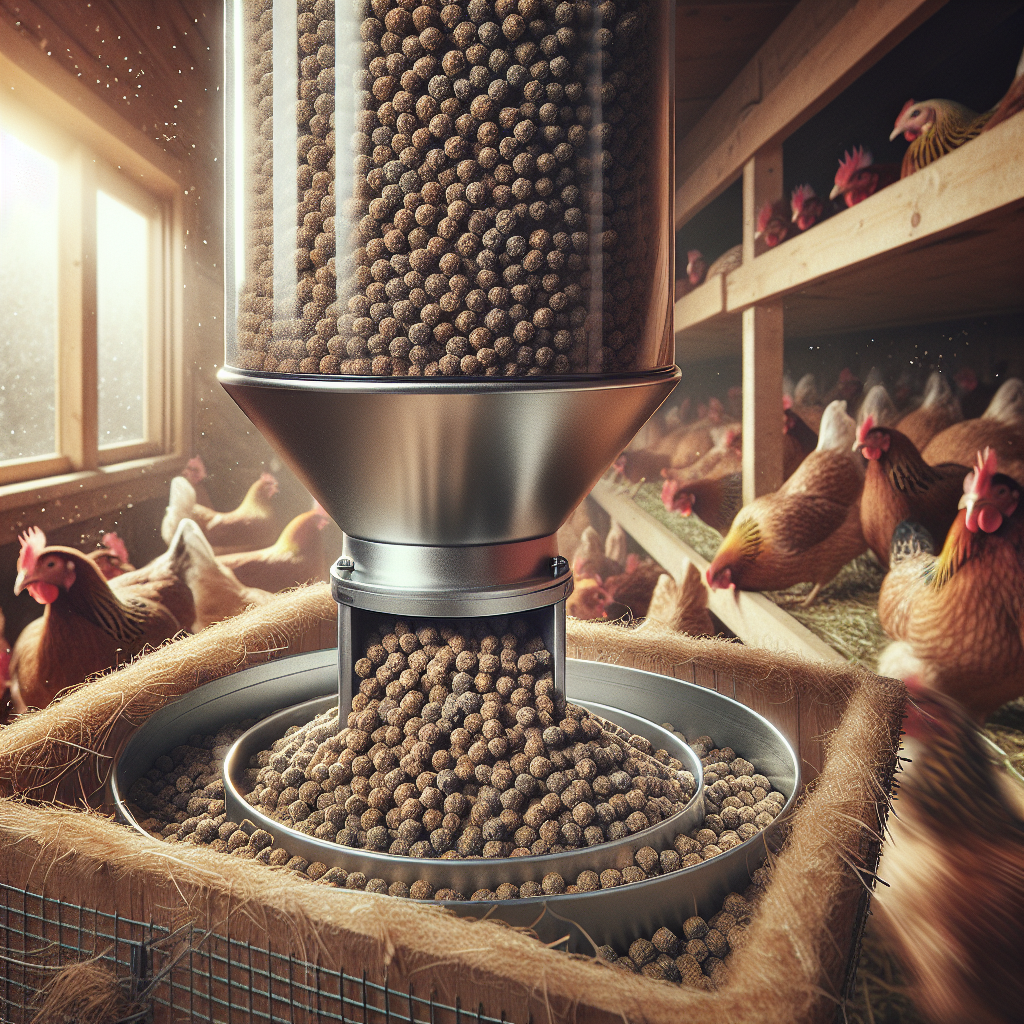If you’ve ever wondered how to take your chicken coop to the next level, incorporating technology or automation features might just be the answer you’re looking for. With advancements in technology, there are now various ways to upgrade your chicken coop and make it more efficient and convenient. From automated feeding and watering systems to smart temperature control, these features not only make your life easier but also contribute to the overall health and well-being of your feathered friends. In this article, we will explore different ways you can incorporate technology or automation features in your chicken coop design, providing you with a glimpse into the future of backyard chicken keeping. So, get ready to discover the endless possibilities that await you and your flock!
Automatic Feeding Systems
Advantages of Automatic Feeding Systems
Integrating automatic feeding systems into your chicken coop design can offer numerous benefits. These systems help simplify the feeding process and ensure a constant supply of food for your flock. Here are some advantages of using automatic feeding systems:
-
Convenience: With an automatic feeding system, you don’t have to worry about manually feeding your chickens multiple times a day. The system will dispense the required amount of feed at scheduled intervals, freeing up your time for other tasks.
-
Consistency: Automatic feeding systems provide consistent and accurate feed dispensing, ensuring that each chicken receives the appropriate amount of food. This helps maintain the overall health and productivity of your flock.
-
Reduced Waste: By automating the feeding process, you can minimize feed wastage. Automatic feeding systems are designed to dispense the exact amount of feed, reducing the chances of overfeeding and reducing costs in the long run.
-
Optimal Nutrition: These systems allow you to program the type and quantity of feed to be dispensed, ensuring your chickens receive a well-balanced diet. By controlling their nutrition, you can promote better growth, egg production, and overall health.
Types of Automatic Feeding Systems
When selecting an automatic feeding system for your chicken coop, it’s essential to understand the different types available. Here are the commonly used automatic feeding systems:
-
Gravity Feeders: These systems utilize gravity to dispense feed slowly as the chickens consume it. Gravity feeders are simple and affordable, making them a popular choice for small-scale chicken coops.
-
Mechanical Feeders: Mechanical feeders use an automated mechanism to release a set amount of feed at predetermined intervals. These systems can be adjusted to suit specific feeding schedules and are suitable for larger chicken coops.
-
Chain-Driven Feeders: Chain-driven feeders consist of a chain-driven mechanism that moves along the feeding trough, distributing feed evenly. This type of feeder is beneficial when feeding a large number of chickens simultaneously.
-
Programmable Feeders: Programmable feeders utilize advanced technology to dispense feed at programmed times and quantities. They offer precise control and are ideal for coops with specific feeding requirements or strict dietary plans.
Selecting the Right Automatic Feeding System
Choosing the appropriate automatic feeding system for your chicken coop depends on several factors. Consider the following points when selecting a system:
-
Coop Size: The size of your coop and the number of chickens will determine the capacity and type of feeding system you need. Ensure the system you choose can accommodate your entire flock.
-
Feeding Schedule: Some systems offer more flexibility in programming feeding schedules. Consider your desired feeding frequency and the ability of the system to accommodate it.
-
Feed Type: Different feeding systems may be better suited for specific types of feed, such as pellets, crumbles, or grains. Ensure the system you choose is compatible with the feed you plan to use.
-
Durability and Ease of Maintenance: Look for feeding systems that are durable and easy to clean. Consider the materials used, and opt for systems with removable parts for effortless maintenance.
Installation and Maintenance of Automatic Feeding Systems
Once you have selected the right automatic feeding system for your chicken coop, proper installation and regular maintenance are crucial for optimal performance. Here are some guidelines to follow:
-
Installation: Follow the manufacturer’s instructions for installing the feeding system. Ensure it is securely mounted and easily accessible for refilling and cleaning. Position it away from areas prone to excessive moisture or pest infestation.
-
Testing and Adjustment: After installation, test the feeding system to ensure proper operation. Adjust the settings as per your flock’s feeding requirements. Monitor the system for a few days to ensure accurate feed dispensement.
-
Cleaning and Sanitization: Regularly clean the feeding system to prevent contamination and the buildup of old feed. Disassemble the system as per the manufacturer’s instructions, and thoroughly clean all components. Sanitize them to eliminate any pathogens.
-
Inspection and Maintenance: Routinely inspect the feeding system for any signs of wear, damage, or malfunction. Replace any worn-out parts promptly. Lubricate moving parts if necessary. Regularly check and adjust the feed level to avoid running out.
By following these installation and maintenance practices, you can ensure that your automatic feeding system remains reliable and efficient, providing your chickens with the nutrition they need while saving you time and effort.




